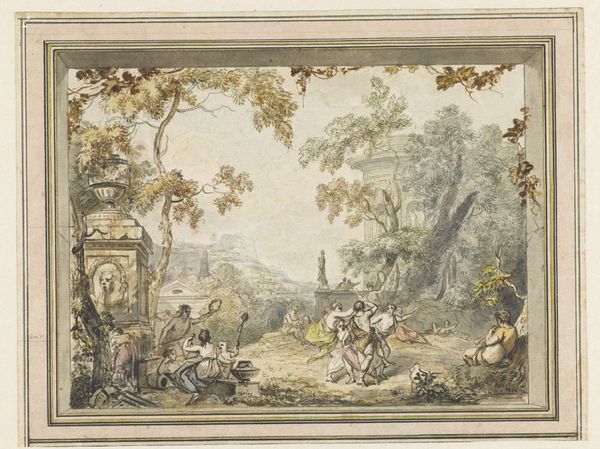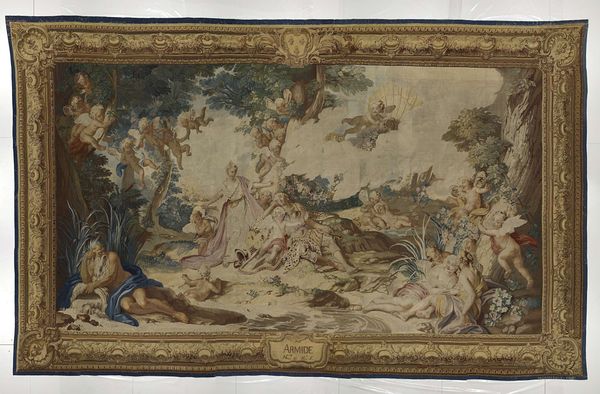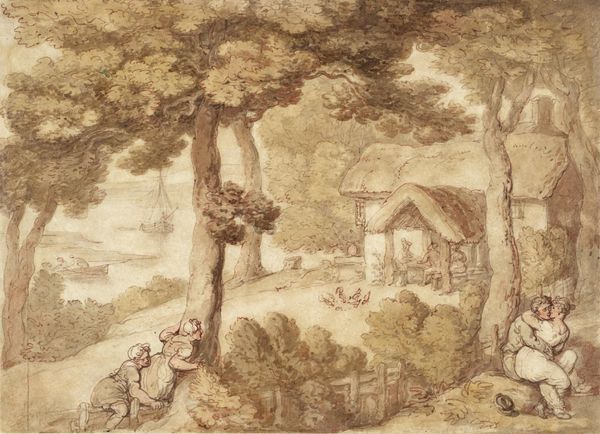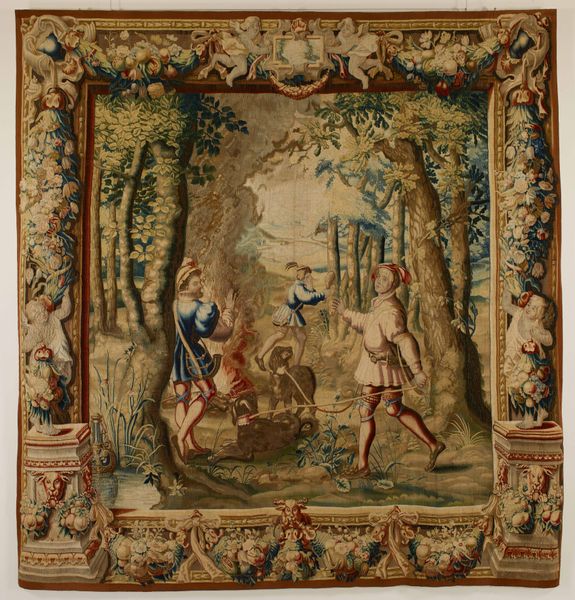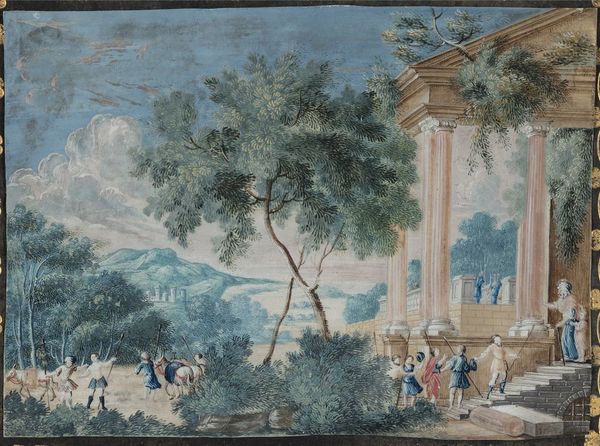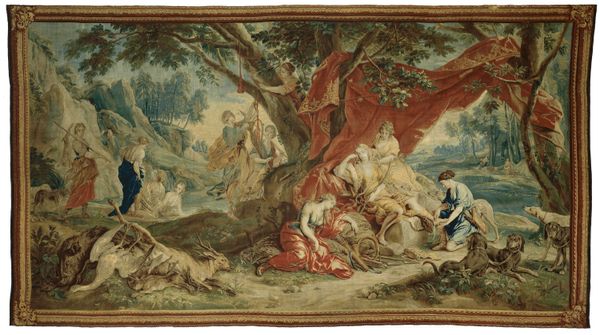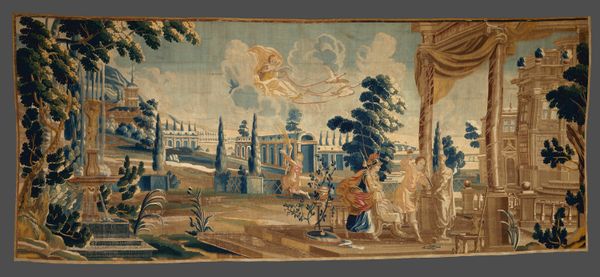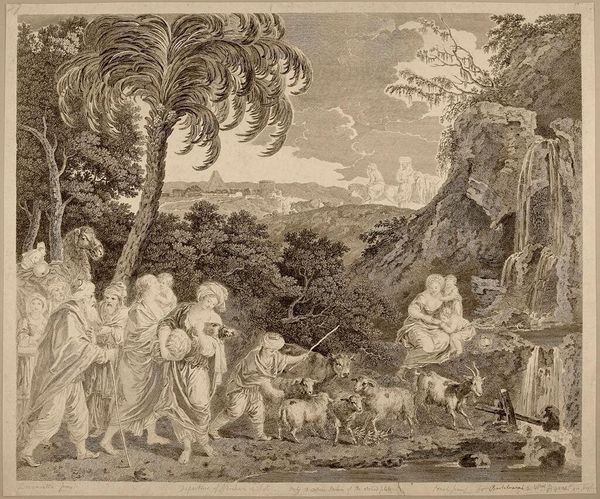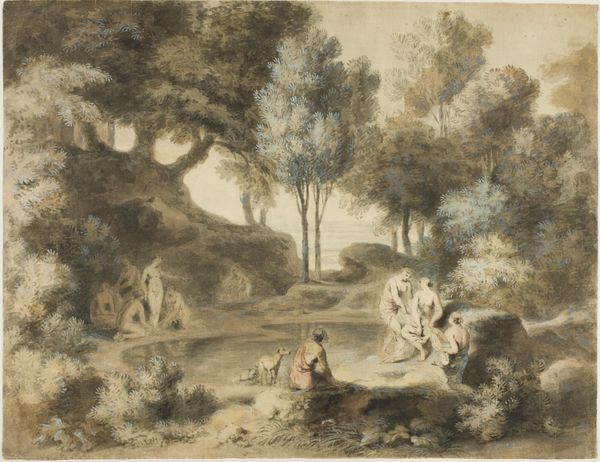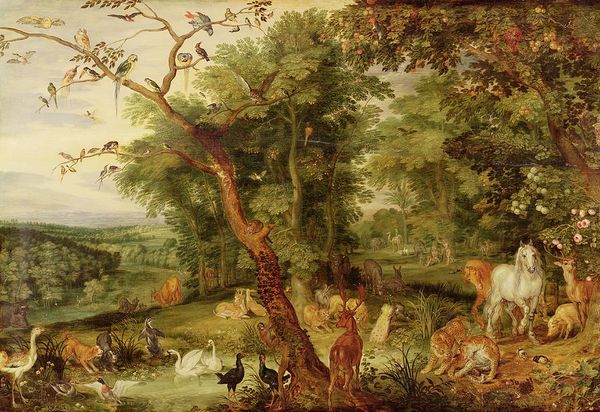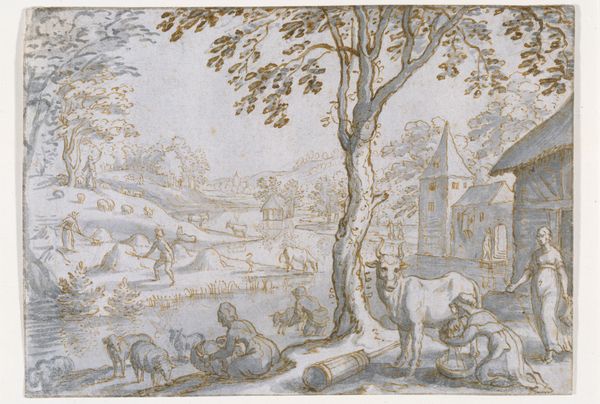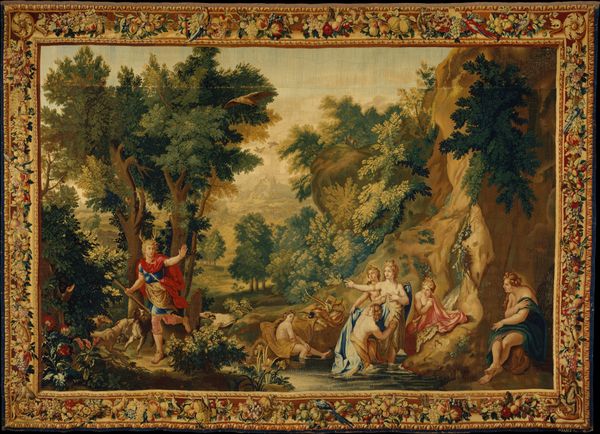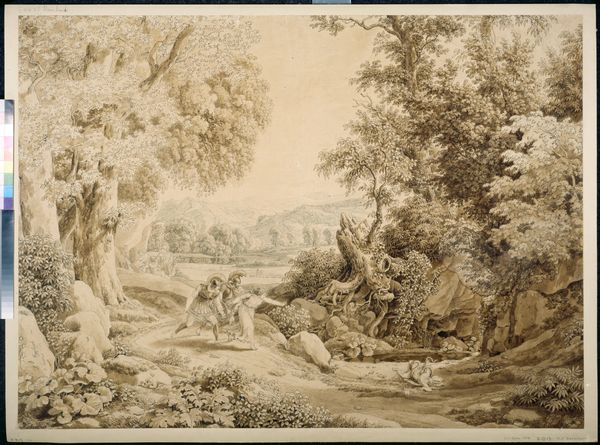
textile
#
baroque
#
landscape
#
textile
#
genre-painting
Copyright: Public domain
Curator: Here we have a French tapestry from around 1730, titled "Les Amusements Champêtres: Le cheval fondu", or "Rural Amusements: The Melted Horse." It’s attributed to Jean-Baptiste Oudry. Editor: It feels light and airy, like a summer day spent outdoors. The colors are muted, almost pastel, giving it a dreamlike quality. The figures are lively, but the whole scene is rendered in a way that it's slightly indistinct as a whole. Curator: That softness you’re noticing, I think, speaks to its Baroque sensibilities blended with landscape elements, reflecting the French court's fascination with idyllic rural life. Notice the texture achieved through the weaving, especially in the depiction of the trees and foliage, giving depth and movement. Editor: It's fascinating how this scene depicts a popular game of "melted horse." Games like that show us an era of socializing so dependent on physical proximity—unlike today’s digital realms. What kind of function did these tapestries actually have back then? Curator: Besides being decorative, pieces like these offered warmth in large, drafty rooms. But more than that, they served as signifiers of wealth and taste. Imagine the conversations they must have sparked amongst viewers at the time. Note how the artist used the formal elements to create an arcadian space and how that in and of itself denotes high-class. Editor: Indeed. The details such as the stone architecture hint at a constructed artifice mimicking nature. There's an interplay of cultivated space and wild, suggestive of class status on display even in what is meant to seem pastoral. Curator: Precisely! Oudry’s tapestry plays with this tension, embedding social commentary through its visual elements. In observing closely, we find more than simple recreation; instead, we uncover a dialogue on nature, class, and social mores. Editor: Thinking about this artwork, one considers its place within the decorative and social context of its time and in present day, where digital spaces offer new types of rural amusements, the piece stands as a statement on how past times connect, influence, and inform us now. Curator: Indeed, studying the woven surface, structure, form, light and the depicted subjects of this particular tapestry is so very rewarding—it unlocks endless interpretations.
Comments
No comments
Be the first to comment and join the conversation on the ultimate creative platform.
